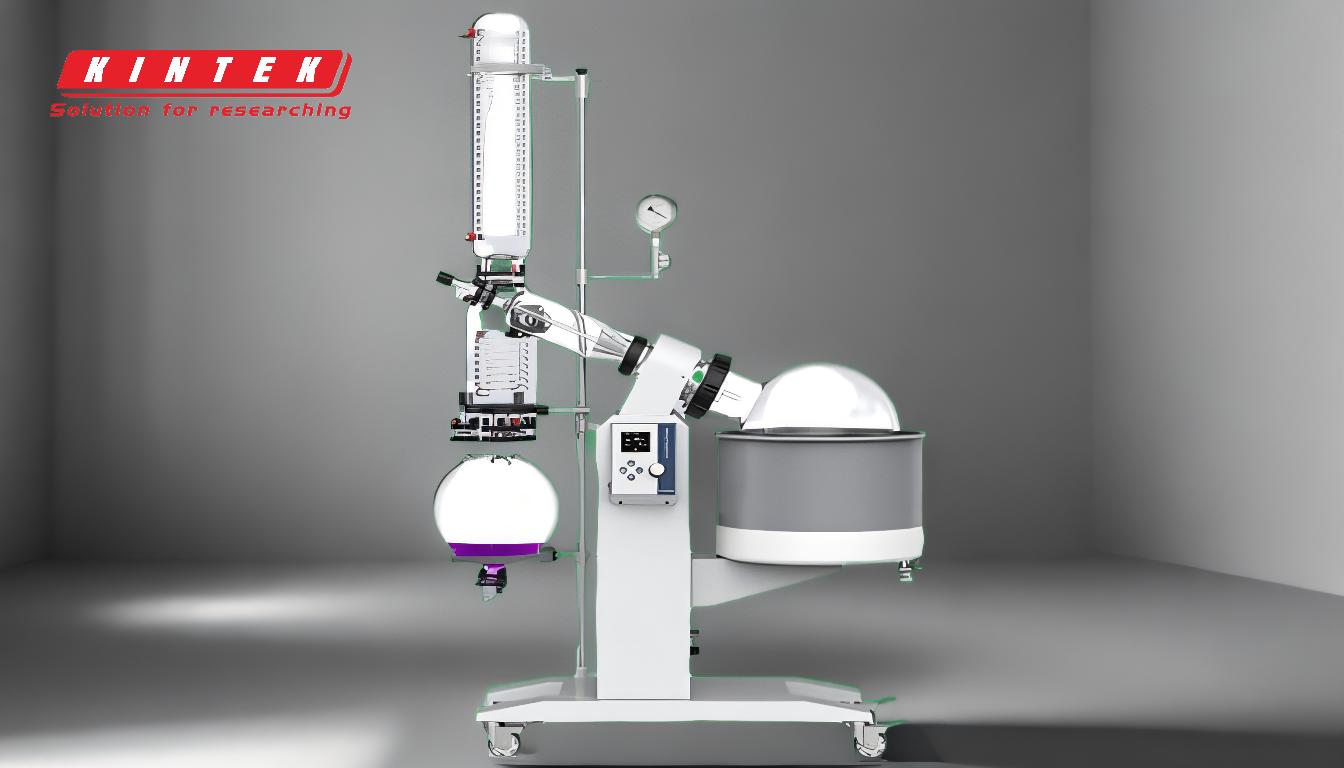A vacuum pump plays a critical role in the operation of a rotary evaporator by creating and maintaining a vacuum within the system. This vacuum lowers the pressure inside the evaporator, which in turn reduces the boiling point of the solvent or sample being processed. By lowering the boiling point, the solvent can evaporate at a much lower temperature, minimizing the risk of thermal degradation and preserving the integrity of heat-sensitive compounds. The vacuum pump works in conjunction with the rotary evaporator's vacuum controller to achieve precise pressure settings, ensuring a gentle and efficient evaporation process. Additionally, the vacuum pump aids in the condensation process by facilitating the re-liquefaction of vaporized gas, making the overall process more effective and controlled.
Key Points Explained:

-
Creation and Maintenance of Vacuum:
- The vacuum pump is responsible for evacuating air from the rotary evaporator, creating a vacuum inside the system. This vacuum is essential for lowering the pressure within the evaporator, which directly impacts the boiling point of the solvent or sample.
-
Lowering the Boiling Point:
- By reducing the pressure inside the rotary evaporator, the vacuum pump lowers the boiling point of the solvent. This means that the solvent can evaporate at a much lower temperature than it would under normal atmospheric pressure. This is particularly important for heat-sensitive compounds that could degrade or lose their integrity at higher temperatures.
-
Gentle and Efficient Evaporation:
- The ability to evaporate solvents at lower temperatures ensures a gentle and efficient evaporation process. This minimizes the risk of thermal degradation, preserving the flavor, aroma, and chemical integrity of the sample. This is crucial in applications such as food science, pharmaceuticals, and chemistry where maintaining the quality of the sample is paramount.
-
Precise Pressure Control:
- The vacuum pump works in conjunction with the rotary evaporator's vacuum controller, allowing users to preset and maintain specific pressure levels. This precise control is essential for optimizing the evaporation process, ensuring consistent results, and preventing over-evaporation or under-evaporation.
-
Facilitating Condensation:
- The vacuum pump also plays a role in the condensation process. By creating a vacuum, it increases the air pressure in the condenser, which slows down the movement of the gas. This helps in the efficient trapping and re-liquefaction of the vaporized gas, making the overall process more effective.
-
Operational Sequence:
- The vacuum pump is typically turned on before starting the motor that rotates the evaporation flask. This sequence ensures that the system is under the correct vacuum conditions before the evaporation process begins, which is critical for achieving the desired results.
-
Reduction of Excessive Heat:
- By allowing solvents to evaporate at lower temperatures, the vacuum pump reduces the need for excessive heat. This not only conserves energy but also protects the sample from potential thermal damage, making the process more sustainable and safer.
In summary, the vacuum pump is an indispensable component of a rotary evaporator, enabling precise control over the evaporation process by creating and maintaining a vacuum. This ensures that solvents can be evaporated at lower temperatures, preserving the integrity of heat-sensitive compounds and making the process both efficient and gentle. The pump's role in facilitating condensation further enhances the overall effectiveness of the rotary evaporation process.
Summary Table:
| Key Function | Description |
|---|---|
| Creation and Maintenance of Vacuum | Evacuates air to create a vacuum, lowering pressure and boiling points. |
| Lowering the Boiling Point | Enables solvent evaporation at lower temperatures, protecting heat-sensitive compounds. |
| Gentle and Efficient Evaporation | Minimizes thermal degradation, preserving sample integrity. |
| Precise Pressure Control | Works with vacuum controller for consistent and optimized evaporation. |
| Facilitating Condensation | Enhances re-liquefaction of vaporized gas for effective condensation. |
| Operational Sequence | Ensures correct vacuum conditions before evaporation begins. |
| Reduction of Excessive Heat | Reduces energy usage and prevents thermal damage to samples. |
Optimize your rotary evaporation process with the right vacuum pump—contact our experts today!










